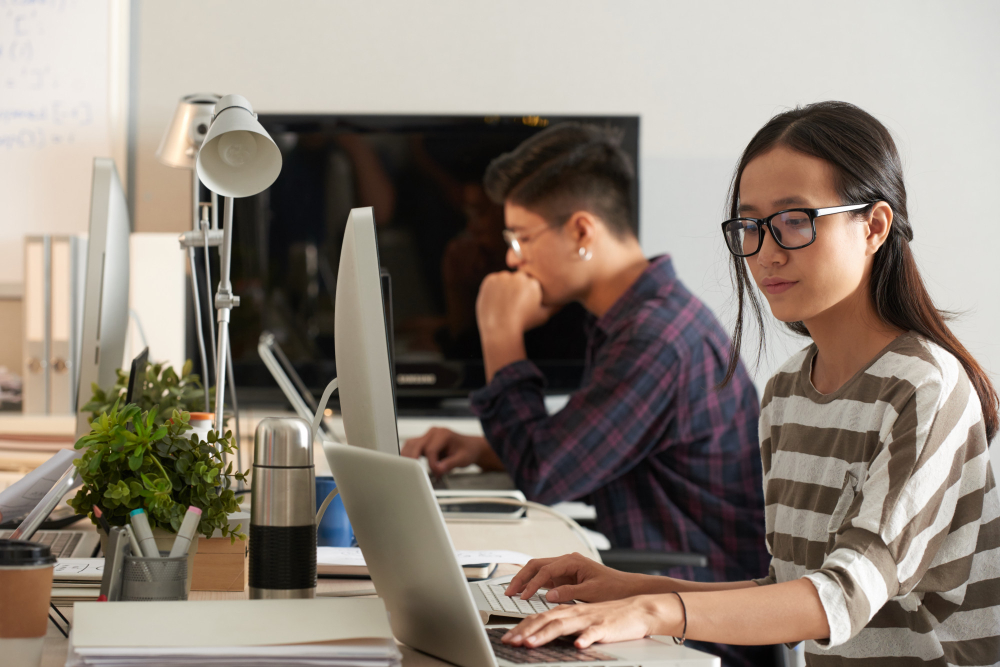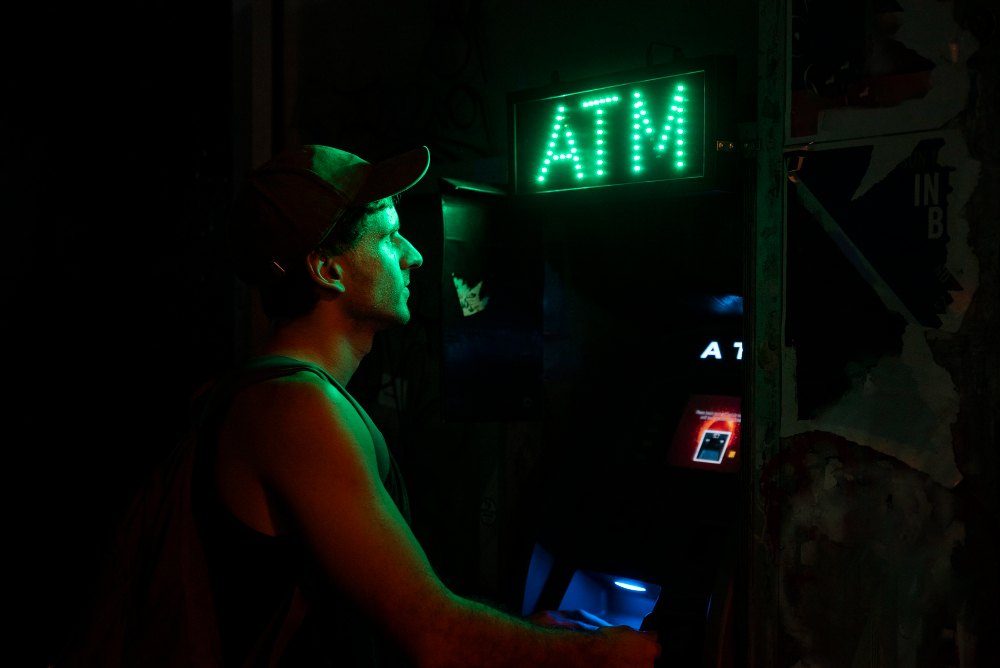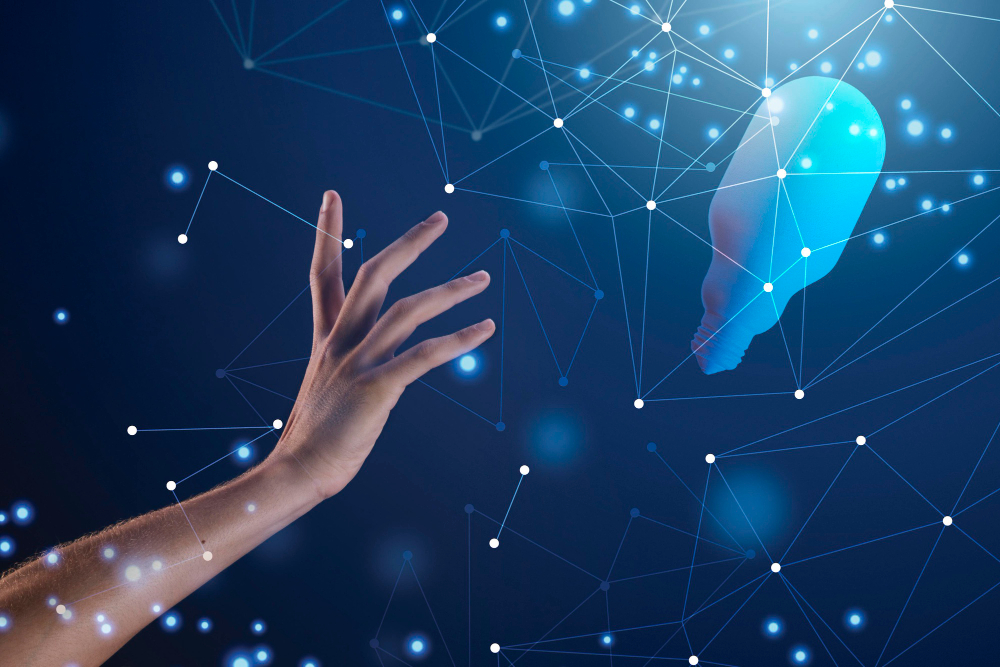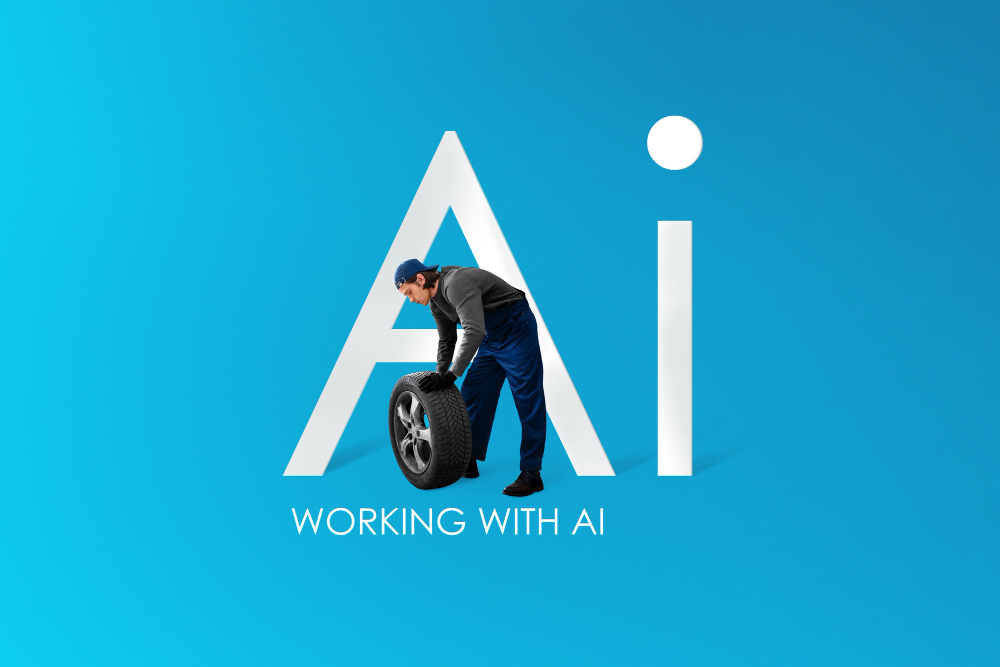AI and Artistic Creativity: Exploring Impact
The convergence of AI and artistic creativity is reshaping the art world. It’s a crucial point that prompts us to question the future of human creativity. As tools like generative adversarial networks (GANs) and machine learning evolve, they do more than expand the artist’s toolbox. They also make us rethink what it means to be original and creative. This blend of tech and art forces us to reevaluate the artist’s role in the AI era and the possibility of machines taking part in or even steering the creative process.
This change has wide-reaching effects, touching on ethical, philosophical, and practical aspects of making and enjoying art today.
Why this matters goes beyond simple curiosity. It’s about understanding how these shifts could redefine our cultural and societal landscapes. Artists using AI to push boundaries are not just experimenting with new tools; they are part of a larger conversation about what creativity will look like in the future. As we navigate these changes, it’s vital to keep the discussion open and inclusive, ensuring that the evolution of art remains a human-centered journey.
Key Takeaways
- AI blends with art, changing creation and perception.
- Concerns grow over artistic originality and intellectual property.
- Art education evolves with technology’s role in creativity.
The Evolution of AI in Art
Over the past few years, the art world has seen a significant shift thanks to artificial intelligence. Tools like DALL-E 2 and Midjourney AI have changed the game, making it possible for anyone to create stunning visuals just from text descriptions. These tools have opened up art to more people, making it easier to imagine and bring to life new ideas.
Artists working alongside AI, such as with Stable Diffusion, have found new ways to push their creativity further. These collaborations allow the creation of unique and lifelike art pieces that were once thought impossible. AI’s ability to learn from vast amounts of data means it can help artists explore new forms of expression.
The role of AI in art has also made us rethink who gets credit for creative work. Artists are now seen more as partners with their AI tools, changing how we view art creation. This change highlights how AI and humans can work together to dive deep into the uncharted territories of creativity, reshaping the art landscape significantly.
In simple terms, AI in art is not just about technology. It’s about opening doors to new creative possibilities and changing our thoughts about making art. This partnership between humans and machines leads us into a future where the opportunities for what can be created are endless.
AI-Generated Visual Masterpieces

The artistic landscape is being reshaped with the help of AI tools like DALL-E 2, Adobe Firefly, and Midjourney. These platforms are transforming how we think about and create art. They allow for creating detailed images based on text descriptions in just a few seconds. This means artists can combine their creativity with AI’s capabilities to push the envelope of what’s possible in visual arts.
AI image generators are incredibly versatile. They can churn out images ranging from wildly imaginative scenes to replicas of well-known paintings. This flexibility is a game-changer for artists looking to experiment with new ideas or pay homage to classic works uniquely.
The collaboration between human artists and AI is producing unique visual masterpieces. This partnership is expanding the horizons of visual expression, allowing for exploring new creative territories. It indicates that the integration of AI in art is not just a passing trend but a profound shift in how art is conceived and brought to life.
In essence, the fusion of human creativity with AI’s computational prowess creates a new era in art. It’s an exciting time for artists and art enthusiasts as we witness the birth of innovative masterpieces that were once thought impossible. This evolution in art-making sets new standards and opens up endless possibilities for what can be achieved in visual arts.
The Role of AI in Music Composition

The fusion of artificial intelligence with the art of music composition has been a groundbreaking step in combining tech with creativity. Early work by figures like Hiller and Isaacson with the ILLIAC computer opened doors to this unique blend, showing how computer assistance in music could lead to exciting results. This journey has included various techniques, from rule-based systems to stochastic models, each offering new ways to approach composition but also facing challenges.
Techniques like Markov chains brought randomness into musical creation, though they sometimes struggled to produce creative outputs. Deterministic or rule-based approaches provided a different perspective, focusing on structured outcomes rather than randomness.
The challenge in mixing AI with music lies in finding the sweet spot between precision and artistic expression to create innovative and emotionally resonant music. Moving from simpler models to advanced machine learning, the industry aims to address these challenges. This progression allows for a broader range of computer-created music that pushes the boundaries of what’s possible, marrying tech with the human touch of creativity.
Literary Creativity and AI

The blend of artificial intelligence and creative writing is revealing an exciting arena. Tools like GPT-3 and Sudowrite are now available to writers, providing new ways to craft their stories, polish their prose, and develop their storytelling skills. Yet, this fusion of tech and creativity raises severe questions about what it means to be original, who really ‘write’ a piece when AI is involved, and whether texts created with AI help can be seen as genuine. Considering how AI can support human creativity without crossing ethical lines in the literary world is crucial.
AI’s role in literature isn’t just about making writing more accessible; it’s about pushing the boundaries of what we can imagine and create. However, discussing the ethical side of AI in writing is necessary. We must consider how much influence AI should have in the creative process. This conversation is essential for maintaining literature’s integrity and authenticity in the AI age.
AI’s Impact on Authors
Harnessing AI tools like GPT-3 and ChatGPT, authors can now boost their writing in unique ways, from dreaming up new ideas to crafting engaging dialogues and plot twists. This blend of technology and creativity excites writing and ushers in a fresh approach to storytelling and digital art competitions.
AI opens doors to experimenting with different writing styles and genres. Tools such as Sudowrite and ShortlyAI are great for helping writers brainstorm, draft, and polish their work. They offer a way out of writer’s block by providing creative suggestions, enabling authors to weave more intricate and varied narratives.
This shift in how authors create represents a significant change in the literary world, making the process more interactive and multifaceted. It’s a step toward a future where technology and human creativity merge seamlessly, offering readers more prosperous and diverse stories.
Enhancing Narrative With AI
Building on how AI helps writers, it’s vital to look at how these tools improve stories and books. AI tools like GPT-3 and advanced language models help writers develop coherent stories and new ideas for plots and conversations. This doesn’t just make writing stories easier; it also makes stories richer, giving writers many new ideas and views. AI can look through many texts to spot recent trends, helping writers improve their stories and keep up with new styles. Platforms like Botnik show how well AI and human creativity can work together, making new and different stories and making storytelling more innovative and varied.
AI tools are reshaping how stories are told. They offer fresh plot lines and dialogues, which spark creativity in writers. This collaboration between human writers and AI brings a new take on storytelling. It makes stories more exciting and brings in ideas that might not have been considered before. Also, AI’s ability to analyze many books and articles helps writers stay current with new trends. This means writers can make their stories feel more present and relevant. In short, AI is making storytelling more dynamic and exciting, offering writers and readers new experiences.
Ethical Considerations in AI-Written Texts
As artificial intelligence enters the writing world, we face new ethical questions about who really ‘writes’ a piece when AI is involved. This raises issues about who owns the work and whether AI-created stories can touch our hearts as traditional literature does. These challenges are shaking up the rules around copyright and questioning if a computer can be considered a creative mind.
Questions about authorship are growing louder. When AI significantly contributes to a piece, figuring out who should get credit becomes complicated. Similarly, deciding who owns a piece of writing isn’t straightforward when an AI has done much of the work. This blurs the line between human creativity and machine input, making it hard to determine where one ends and the other begins.
The originality of stories crafted by AI is also under scrutiny. People wonder if these tales can evoke the same feelings and depth as those penned by human authors. This debate touches on what makes literature unique, challenging the notion that emotional resonance is exclusive to human-created works.
Moreover, the rise of AI in literature is pushing us to rethink intellectual property rights. As machines play a more significant role in the creative process, applying traditional copyright laws is difficult. This shift forces us to reconsider what it means to be a creator in the digital age.
Ethical Considerations in AI Art

The rise of AI art has brought forward serious ethical questions about how we use and credit artists’ work in training AI models. As AI steps into art creation, a burning issue is how artists are compensated when their work helps AI learn. This situation becomes even more complicated when AI creates pieces that strongly resemble the style of specific artists without their explicit permission. This practice challenges the very idea of creative ownership and raises ethical concerns.
There is also a clear divide in how artists and AI companies view the creation and use of AI-driven artwork. The debate over who owns AI-generated art, especially when it closely imitates the work of well-known artists, is heating up. This debate is shaking up traditional authorship and intellectual property views, calling for new legal and ethical guidelines.
Adobe is stepping up to address these ethical challenges in AI art creation, showing a shift towards more responsible practices in the industry. Such actions are crucial for fostering a fair and honest environment for AI in the art world.
Human Vs. AI Creativity
Exploring the realm of creativity, it’s essential to differentiate between human and AI-driven creativity, especially in the arts. Human creativity is complex, rooted in emotions, intentions, and a unique essence. Meanwhile, AI, using algorithms for pattern recognition, finds it hard to mirror this depth. Tools like DALL-E 2 and Adobe Firefly have stirred the pot by automating creative tasks, which creates a new relationship between human artists and AI.
AI tools offer human artists new ways to create by simplifying tasks and opening up new avenues for exploration. However, AI still can’t capture the unique essence of human creativity, which is tied to our emotions and intentions. These tools change how we think about who creates art and controls it. According to Margaret Boden, AI doesn’t replace human creativity but acts as a partner, enhancing the creative process.
This partnership highlights the potential of merging human insight with AI’s ability to recognize patterns. It encourages a collaborative relationship that enriches artistic creativity.
The Impact on Traditional Art Forms
The rise of artificial intelligence, mainly through tools like DALL-E 2 and Adobe Firefly, is reshaping the world of traditional art. These technologies challenge old ideas about who creates art and how it’s controlled. Now, AI systems like Midjourney AI are changing the game by making it possible to recreate famous artworks. This turns artists into guides who direct the creative process rather than doing everything by hand.
This change means artists focus more on guiding AI tools than just using their hands to create. It’s pushing them to try new things and find creative ways to express themselves. Also, as AI becomes a more significant part of art, there’s a call for education to focus more on how to use these AI systems.
In short, AI in art is making it necessary for artists to think differently about their work. They’re learning to combine their ideas with technology to create new ways. This is important because it opens up new possibilities for what art can be. And as artists and educators adapt, we’re seeing the beginning of a new era in art.
AI Tools for Artists
The introduction of AI tools like DALL-E 2 and Adobe Firefly has significantly changed how art is made. These tools challenge the traditional views on who creates art and how it’s created. They allow for the quick creation of art using large databases, changing the artist’s role to more of an AI creation partner. Artists can now produce unique content through these AI processes, opening up new opportunities for art in the digital world.
These advancements mean artists can now work with AI to discover new aesthetic possibilities. It’s a big step forward in how art can be produced, offering more ways to create than ever before. This collaboration between humans and machines reshapes the art landscape, making it an exciting time for artists and enthusiasts.
Enhancing Creative Processes
In the world of artistic creation, AI tools like DALL-E 2 and Adobe Firefly are changing the game. They’re making it possible for artists to team up with technology in creating art. This partnership is opening new doors for what can be achieved creatively.
Stable Diffusion is a game-changer in generating complex images, pushing the limits of what we can visualize. When artists and AI work together, they enter new creative spaces, blending human creativity with the efficiency of machines. Education in the arts is evolving, too, with a new focus on learning how to use these AI tools to push artistic boundaries further.
AI systems are creating new spaces for artists to experiment, challenging old ideas of beauty and storytelling. This move toward collaboration between artists and AI marks a significant change in how we think about creativity. It’s about combining human and machine intelligence to explore new artistic possibilities.
AI in Art Production
AI tools like DALL-E 2, Adobe Firefly, and Midjourney transform artists‘ creativity. These technologies open up new possibilities for creativity, changing how we think about who makes art and how it’s made. Artists using these tools can venture into new territories of creativity, blending their skills with AI to produce unique works. This partnership between artists and AI enriches the creative process, making art creation more dynamic and innovative.
Tools like Stable Diffusion and Artbreeder generate countless images daily from text descriptions, offering artists a quick way to expand their creative options. This shift in how art is produced is groundbreaking, presenting challenges and opportunities to the art world. The ability of artists to quickly generate visual ideas helps them to iterate and refine their visions more efficiently. This represents a significant leap in how art can be created, shared, and experienced, making art-making more accessible and varied.
Introducing AI into art is not just about the technology itself but how it can catalyze creativity. It allows artists to experiment in ways previously unimaginable, pushing the boundaries of traditional artistry. As this technology continues to evolve, it will undoubtedly shape the future of art in exciting and unforeseen ways.
The Future of AI in Art Education
The future of art education is increasingly intertwined with AI technology, leading to exciting new methods for teaching and creating art. This blend of AI and artistic practices isn’t just changing the tools artists use and reshaping how we think about creativity and education. By incorporating AI, teachers and students can venture into new realms of artistic work, expanding the boundaries of art as we know it.
AI collaboration is becoming a staple in art classrooms, encouraging a partnership between technology and the artist. This approach pushes creativity to new heights, making the art-making process more collaborative. Using AI for repetitive or skill-intensive tasks lets artists focus more on the aspects of art that require human creativity. This shift is moving artists away from working in isolation towards being part of a creative team with technology.
Education in the arts now places value on understanding AI tools as much as it does traditional techniques. This dual focus enriches the creative process, offering artists more ways to bring their visions to life. The rise of AI in art signifies a time when technology is essential to creative exploration.
This evolution in art education hints at a world where AI plays a crucial role in the creative process. It opens up new opportunities for artists to express themselves in innovative ways.
AI, Art, and Cultural Preservation
AI’s role in safeguarding our cultural and artistic heritage is groundbreaking, offering new ways to preserve and share the rich tapestry of human creativity. With AI, we’re seeing a revolution in maintaining the integrity and accessibility of artworks, manuscripts, and other cultural artifacts. Technologies like image recognition and advanced algorithms are at the forefront, helping to restore and digitize these treasures with astonishing accuracy.
These technologies not only restore damaged items but also make it easier for people around the world to explore and appreciate them online. AI is crucial in analyzing and protecting various forms of art and tradition, ensuring that the diverse expressions of human creativity are not lost to time. It also significantly translates and interprets ancient texts, offering insights into long-lost cultures and languages.
| AI Application | Benefit | Impact on Cultural Preservation |
|---|---|---|
| Digitization | Accessibility | Keeps cultural treasures available for everyone |
| Restoration Algorithms | Detecting Damage & Improving Quality | Helps preserve and maintain the condition of artifacts |
| Image Recognition | Easy Analysis and Sharing | Makes cultural heritage globally accessible |
| Language Processing | Understanding & Sharing Knowledge | Keeps alive a wide range of cultural stories |
| Documentation | Protecting Heritage | Ensures unique expressions of culture are saved |
This approach is not just about using new tools for innovation. It’s about ensuring that future generations can enjoy and learn from the cultural legacies we cherish today. Through AI, we can protect and share our global heritage in previously unimaginable ways, making it an essential part of cultural preservation efforts.
Frequently Asked Questions
How Is AI Used in Creativity?
- AI inspires and sets limits for more creative work.
- It automates mundane tasks, expanding creative boundaries.
- Encourages artistic collaboration, blending technology and art.
What Does AI Mean for Artists?
- AI challenges artists’ ethics and sparks debates.
- It enables collaboration and skill growth.
- Technology and creativity are redefining art’s limits.
What Does AI Mean for the Creative Industry?
- AI challenges traditional creative rights and cultural norms.
- Job risks and ethical questions arise with AI in creativity.
- AI reshapes how we create and experience art.
How Is AI Affecting the Arts?
- AI stirs ethical debates in the arts.
- Artists face challenges adding emotion and uniqueness.
- The field demands creative tech solutions.
Conclusion
Integrating artificial intelligence (AI) into art is a significant change. It’s reshaping how we think about art and who makes it. AI helps create stunning visuals, new music, and fresh stories.
This shift is exciting but also raises concerns about creativity and rights. As AI and artists work more closely, we’ll see changes in how art is taught and remembered. This is a new chapter in the history of art.